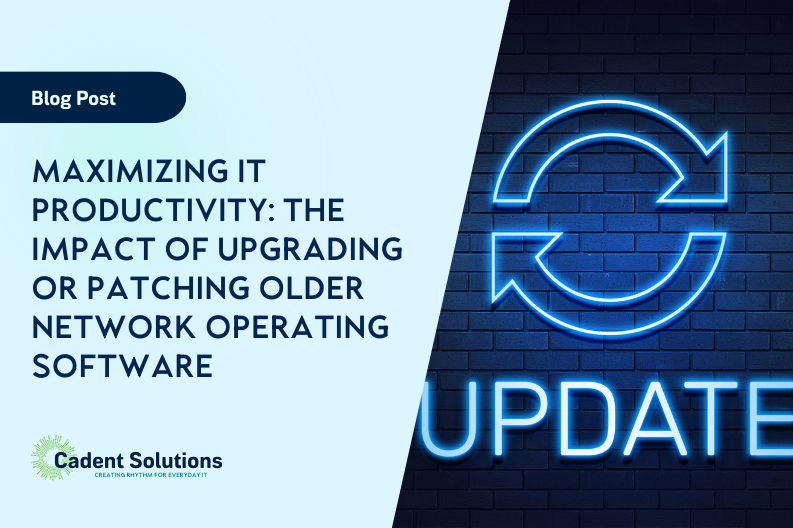Maximizing IT Productivity: The Impact of Upgrading or Patching Older Network Operating Software
One of the critical decisions organizations face is whether to upgrade or patch older network operating software. It’s always tempting to delay such updates due to costs or potential disruptions or even having an “it won’t happen to us” mentality, but the benefits to productivity, risk, and overall operational efficiency far outweigh the cost factor.
There’s a reason why network vendors (like Cisco) provide patches and new releases on a regularly scheduled basis as a means of keeping customers aware of fixed vulnerabilities, defects, and new features. And even though keeping up with patches and new releases can be cumbersome, staying current with your network operating software is vital for IT productivity and to ensure that your network infrastructure remains reliable, secure, and efficient.
Enhanced Security
Older network operating software is a prime target for cyberattacks. Security vulnerabilities in outdated systems can lead to data breaches, ransomware, and other cyber threats that disrupt operations and require extensive time and resources to mitigate. Upgrading or patching ensures that the latest security features and patches are in place, significantly reducing the risk of downtime caused by cyber incidents.
Improved System Performance
With each update, network operating software developers optimize performance, address bugs, and introduce new features. These enhancements can lead to faster data processing, reduced latency, and more efficient use of hardware resources. Improved system performance translates to a smoother workflow for IT teams and end-users, minimizing delays and boosting productivity.
Streamlined IT Operations
Modern network operating systems often include tools and functionalities that simplify IT management. From automated updates to advanced monitoring capabilities, these features enable IT teams to address potential issues and reduce manual tasks proactively. This allows staff to focus on strategic initiatives rather than routine maintenance.
Support for Modern Technologies
Outdated software often lacks compatibility with the latest hardware and software solutions. This can hinder an organization from adopting new technologies that enhance collaboration, data analytics, and cloud integration. Upgrading ensures your network can support these advancements, keeping your organization competitive and agile.
Reduced Total Cost of Ownership (TCO)
While upgrading or patching might involve upfront costs, the long-term savings can be substantial. Older software often requires frequent troubleshooting, expensive workarounds, and higher energy consumption. Modernized systems are more efficient, leading to lower operational costs and a higher return on investment.
Employee Productivity and Satisfaction
Network downtime or slow performance caused by outdated systems can frustrate employees and hinder their ability to complete tasks efficiently. A well-maintained and updated network ensures that employees have the tools to work effectively, leading to higher satisfaction and productivity.
Key Considerations for Upgrading or Patching
- Assess Compatibility: Ensure updates or upgrades align with existing hardware and software to avoid unexpected issues.
- Plan for Downtime: Schedule updates during low-traffic periods to minimize disruption.
- Backup Data: Always back up critical data before changing your network operating system.
- Test Updates: Deploy updates in a test environment first to identify and resolve potential issues.
- Train IT Staff: Equip your IT team with the knowledge and skills to manage and optimize the new system.
Conclusion
Upgrading or patching older network operating software is not just about staying current; it’s about safeguarding your organization’s productivity, security, and future growth. While the process might require careful planning and investment, the benefits outweigh the risks of maintaining outdated systems. Organizations can prioritize regular updates to empower their IT teams, enhance efficiency, and remain resilient in an ever-evolving digital landscape.
Cadent Solutions has the expertise to assist you with your software upgrade lifecycle management (SWUL). Contact us for a complimentary assessment of your business processes and network infrastructure upgrade needs.

